From tape recordings to the loudness wars and digital streaming, how have the dynamics of music changed over the years, and why?
Dynamics in music have been a big issue over the last couple of decades. Our world of knobs, faders and technical knowledge doesn’t usually seep into popular culture, but the general public are even aware of ‘the loudness wars’ and their effect. Those wars seem to be a thing of the past now, but loudness and dynamics continue to shift and become altered.
In this article, we’ll look even further back, taking you on a tour of how dynamics have changed – and why – since some of the earliest days of popular music. We’ve analyzed a catalog of music using our plugin true:level, and we’ll be showing examples of songs that typify the dynamics practices of their era along the way.
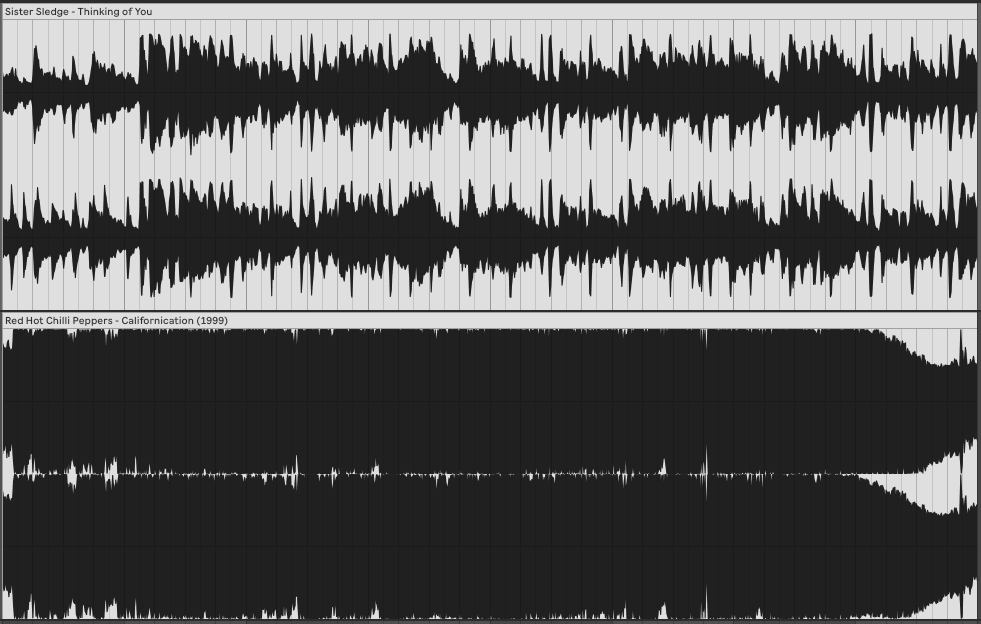
waveforms in comparison: Thinking of you by Sister Siedge vs. Californication (1999) by Red Hot Chili Peppers
When you look back at the 40s and 50s, you don’t see a sudden scramble for loudness, but it’s possible to see the trend starting to emerge. Comparing any given track’s loudness and dynamics from that era with a modern day equivalent will highlight how much things have changed.
One of the key reasons for this, is that when sudden and extreme changes in level are cut into a vinyl record, the bump in the groove could be enough to throw the needle out of place. Engineers of the 40s and 50s, then, were careful to avoid pushing the volume too much.
Using true:level, we can see that Louis Armstrong’s C’est Si Bon (1950) has little overall loudness and is especially dynamic when compared to today’s Spotify standard.
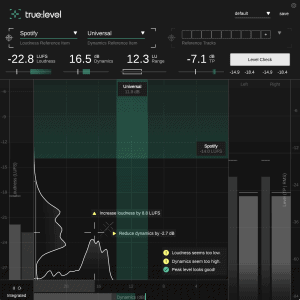
true:level analyzing C’est Si Bon (1950) by Louis Armstrong
But there was an incentive to make music louder, even back then: the use of jukeboxes in busy bars and pubs started to have an effect on the loudness of records. In general, a jukebox’s volume was set by the landlord and left there. Labels quickly figured this out, and started to master with loudness in mind so that their tracks would not only cut through the chatter of the bar, but would also stand out against other music.
As technology and production techniques improved in line with this goal of loudness, the volume of records continued to creep up. This was exacerbated by commercial radio becoming more and more accessible after its introduction in 1954. As with jukeboxes, labels and artists wanted their music to be competitive against other music so that it stood out to stations and listeners. However, the physical limitations of vinyl prevented the loudness wars from reaching their extremes.
Comparing the overall loudness and dynamics of two tracks almost two decades apart, we can see how things have changed in this time period. First off, Ben E. King’s Stand By Me (1961) has a low volume compared to today’s standards, but a high dynamic range. Bill Brandon’s We Fell in Love While Dancing (1977) still falls short of today’s targets, but is louder and less dynamic than Stand By Me.
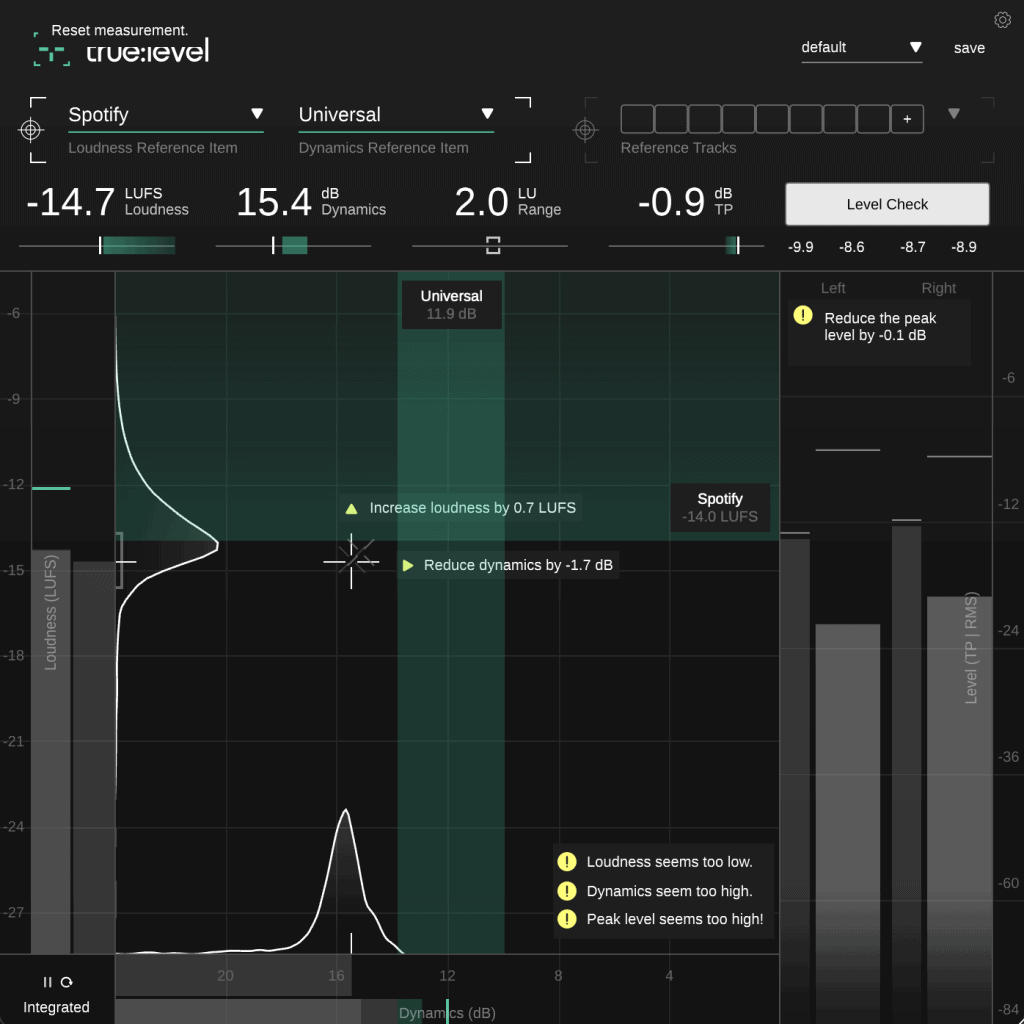
true:level analyzing We Fell in Love While Dancing (1977) by Bill Brandon
The beginning of the 80s saw the introduction of a major revolution in music consumption: the compact disc. CD’s arrival onto the commercial audio market put digital audio in the hands of the masses, and its small form factor but larger capacity made it a roaring success. Additionally, CDs weren’t prone to the same physical wear and tear that records were, making them more reliable than their vinyl predecessors.
The migration to CD had its benefits for engineers, too. CDs had a considerably lower noise floor than vinyl, which paired with its clearly defined maximum peak level made it possible for mastering engineers to crank the volume up to the proverbial 11. On the face of it, this might seem like an advantage; in practice, this was the catalyst for the apex of the loudness wars.
We can see this jump in volume from many popular 80s tracks, including Whitney Houston’s I Wanna Dance With Somebody (1987).
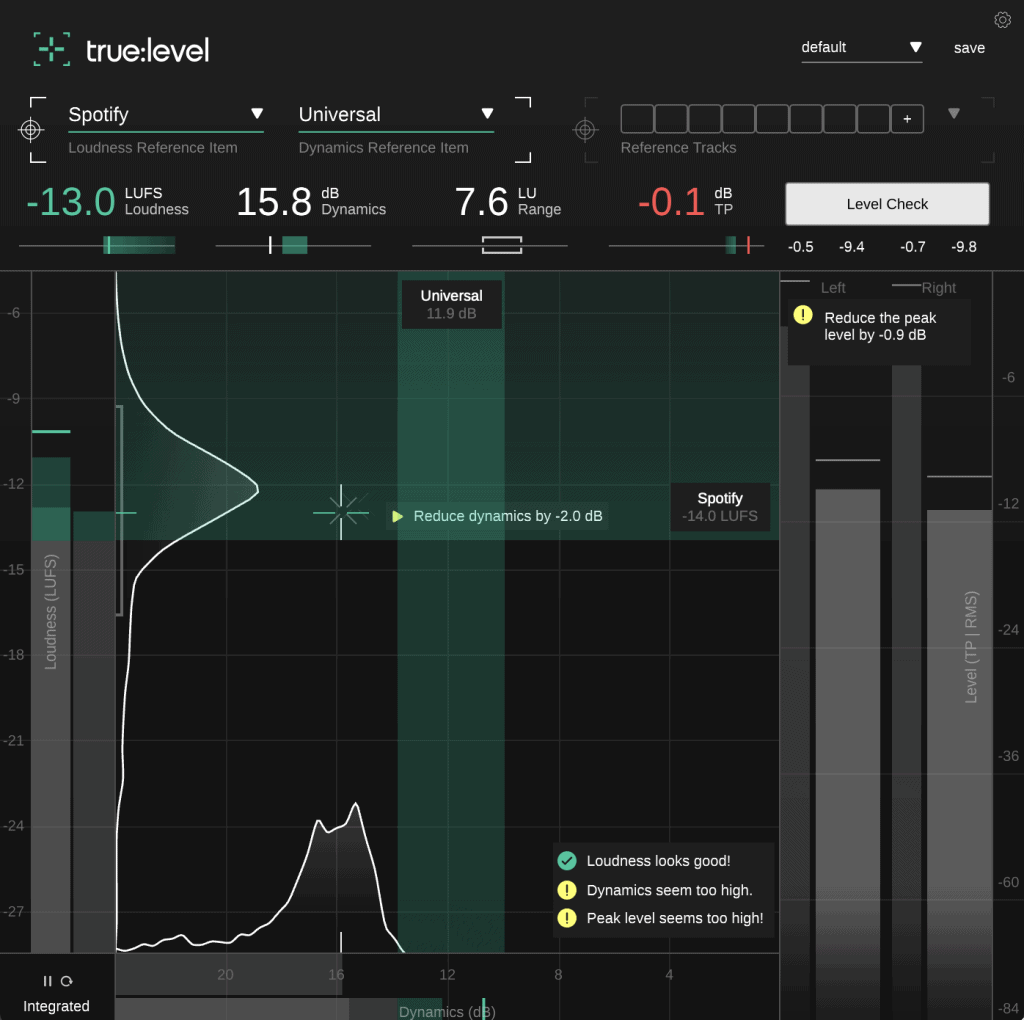
true:level analyzing I Wanna Dance With Somebody (1987) by Whitney Houston
By the time the 90s came around, CDs had almost completely taken over from vinyl, in which time engineers had sussed out how to get as much loudness out of the format as possible. Of course, the continual evolution of technology played its part too.
The standout development in this time period was the increasing power and availability of Digital Audio Workstations, or DAWs. Soundstream’s Digital Editing System was available in 1977, but being the first DAW it wasn’t ready to take over from the well established music studio. In 1989, Pro Tool’s predecessor, Sound Tools, was released by Digidesign. This program was much better equipped to take the reins from the studio, thus propelling the shift from analog to digital as it became more widely used throughout the 90s.
The DAW’s new-found role in the music production world opened doors for the world of digital instruments and effects, too. Most pertinent to the loudness wars was Waves L1, which became commercially available in 1994. L1 was the first digital brickwall limiter with look-ahead, and as such it became the go-to tool for engineers seeking to squeeze dynamic range as hard as they could.
It’s during this decade that we can spot arguably the most obvious descent into the loudness wars. Nirvana’s Smells Like Teen Spirit (1991) is sufficiently loud while retaining its dynamics.
In diesem Jahrzehnt können wir den wohl (bestreitbar) offensichtlichsten Abstieg in den Loudness War beobachten. Smells Like Teen Spirit (1991) von Nirvana ist ausreichend laut und behält seine Dynamik.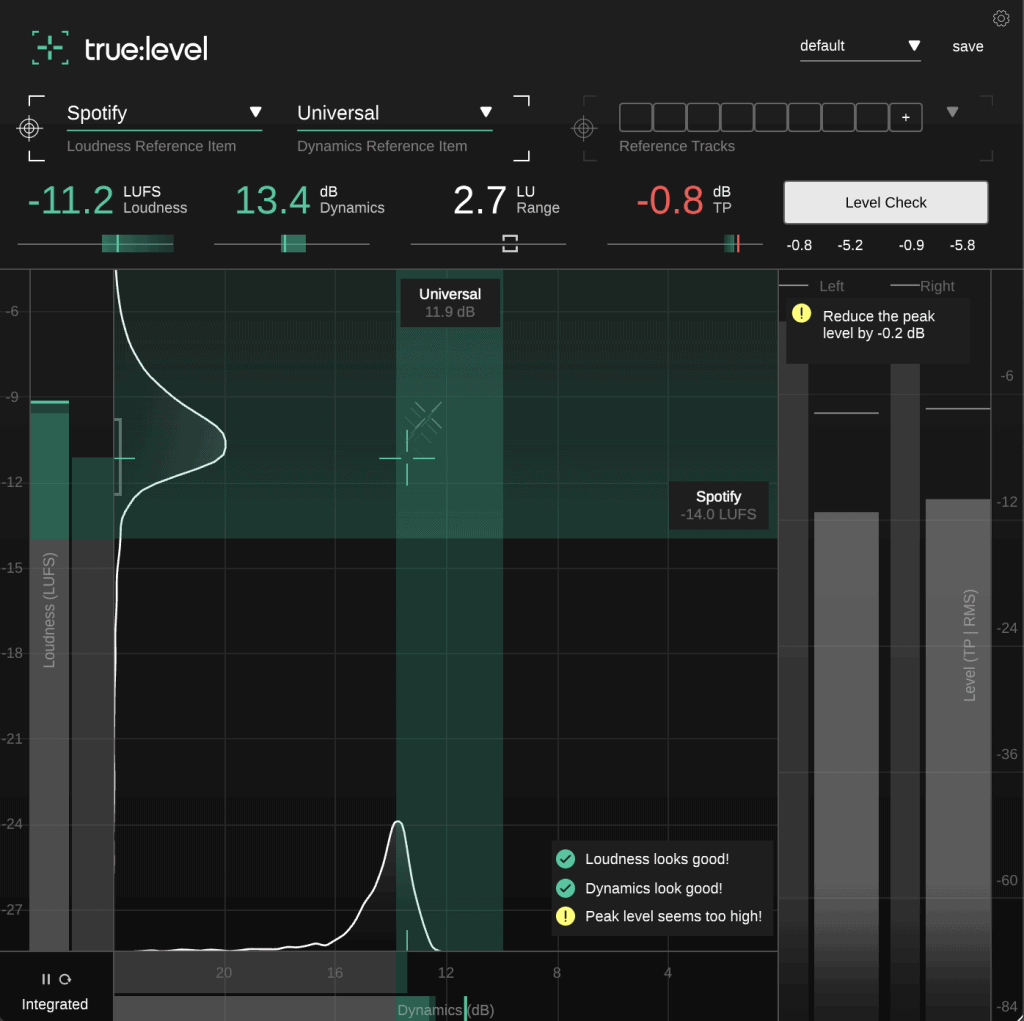
true:level analyzing Smells Like Teen Spirit (1991) by Nirvana
Just eight years later, Red Hot Chilli Peppers released Californication, widely regarded as one of the biggest casualties of the loudness wars. Looking at the readings from true:level, we can see the stark comparison in dynamics and loudness between the tracks. Nirvana’s 13.4dB of dynamics is considerably more dynamic than the Chillis’ 7.4dB.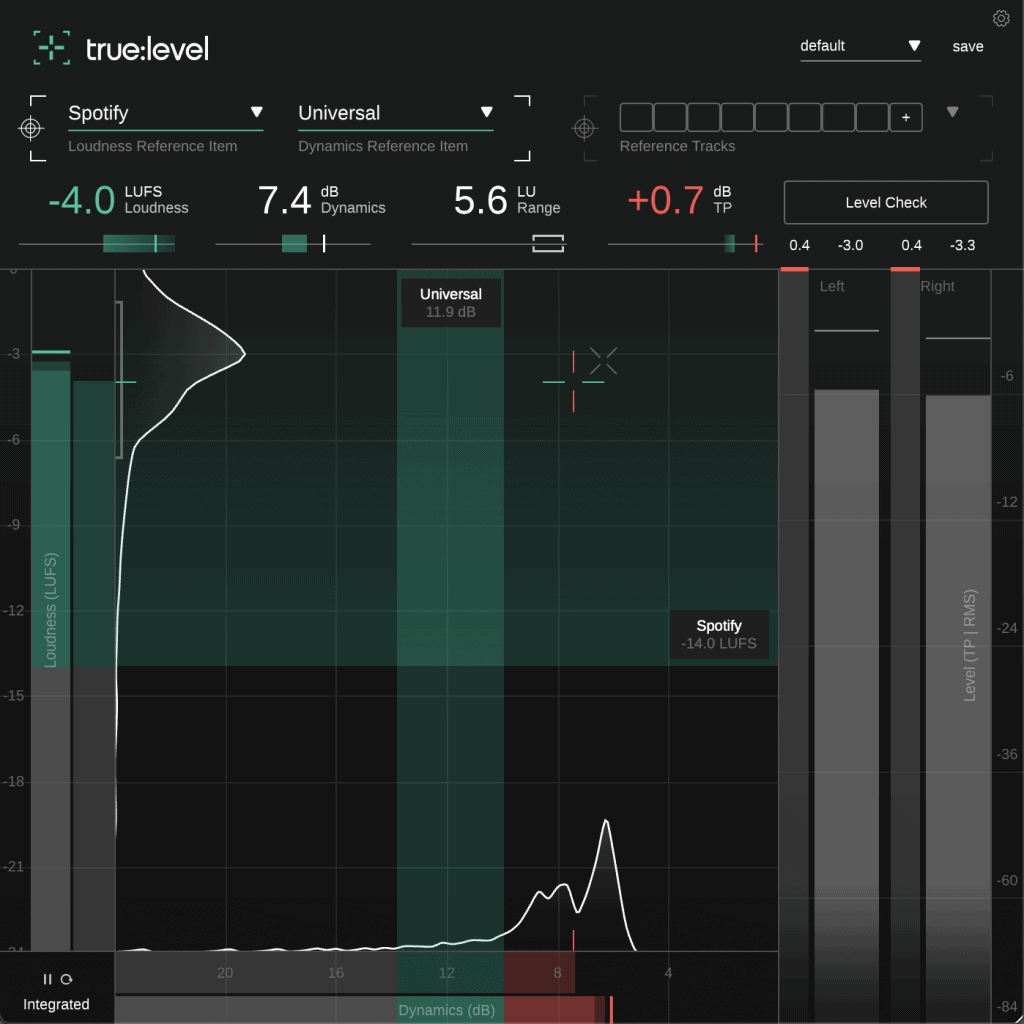
true:level analyzing Californication (1999) by Red Hot Chili Peppers
At the start of the millennium, something very interesting was bubbling up within the consumer audio world that directly related to the loudness wars. In a bid to improve the user experience of MP3 players and iPods, technology was developed that was designed to maintain a consistent volume between songs, negating the need for listeners to constantly ride their volume controls. In MP3 players, this took the form of a standard called ReplayGain. The Apple equivalent, Sound Check, is still the default setting in Apple devices today.
These new playback algorithms started to have an effect on engineers’ approaches to loudness. What would be the point of removing all the dynamics of a track and turning it up as loud as possible, if the end user’s playback device was just going to bring its volume in line with the previous track?
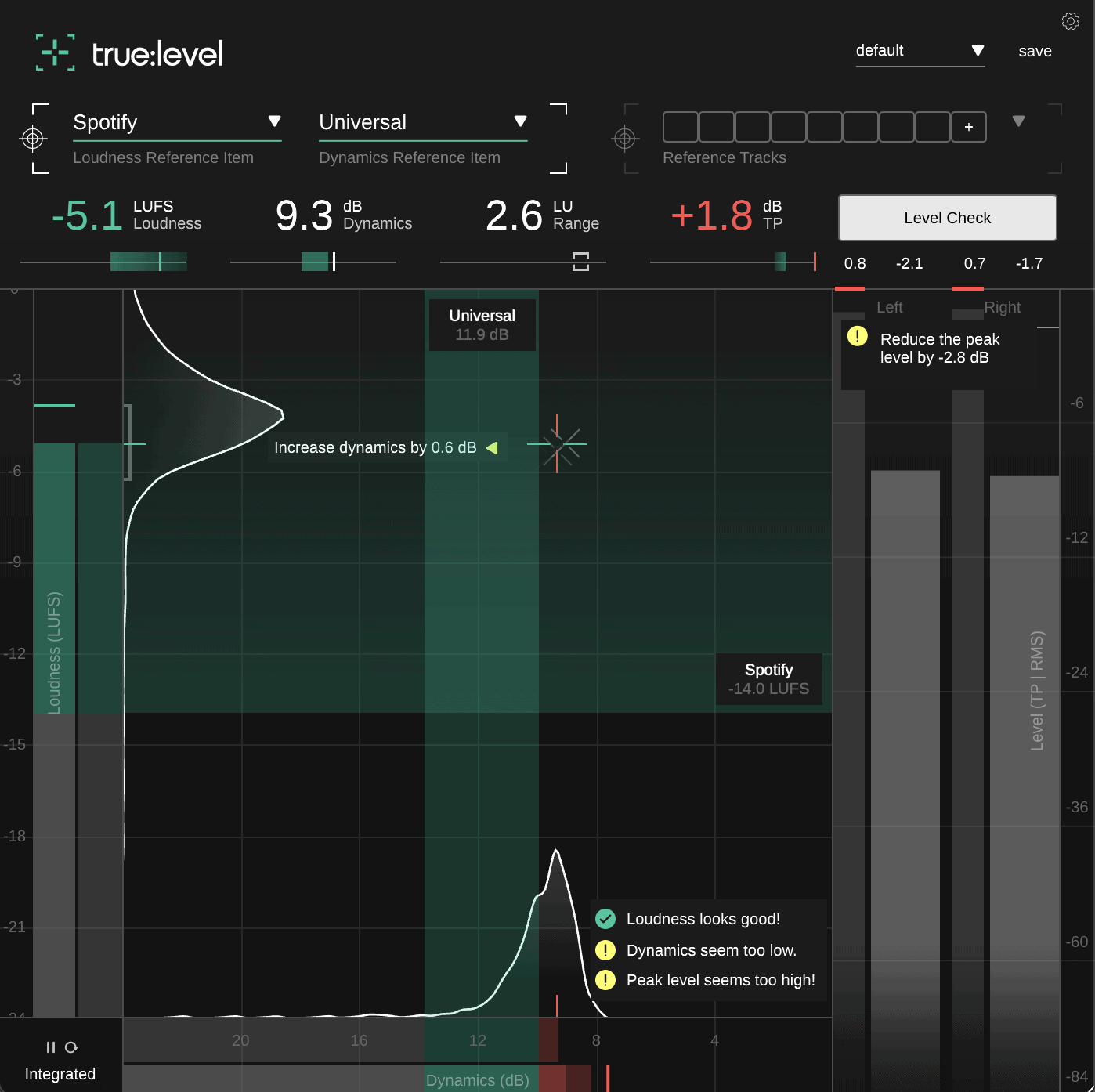
true:level analyzing American Boy by Estelle
Despite these advancements in consumer audio, the momentum of the loudness wars meant that engineers and labels were still hankering for as much volume as possible. There are sadly many standout casualties from this era, one of the most notable being Metallica’s Death Magnetic album. The album was limited to the point of audible distortion, much to the anger of fans who caused so much uproar about the audio quality that the loudness war became almost a household name, thanks to the coverage from the likes of Wired, The Guardian and BBC.
2008 was clearly a pinnacle for the loudness wars, as Estelle’s American Boy and La Roux’s In for the Kill suffered the same fate the same year.
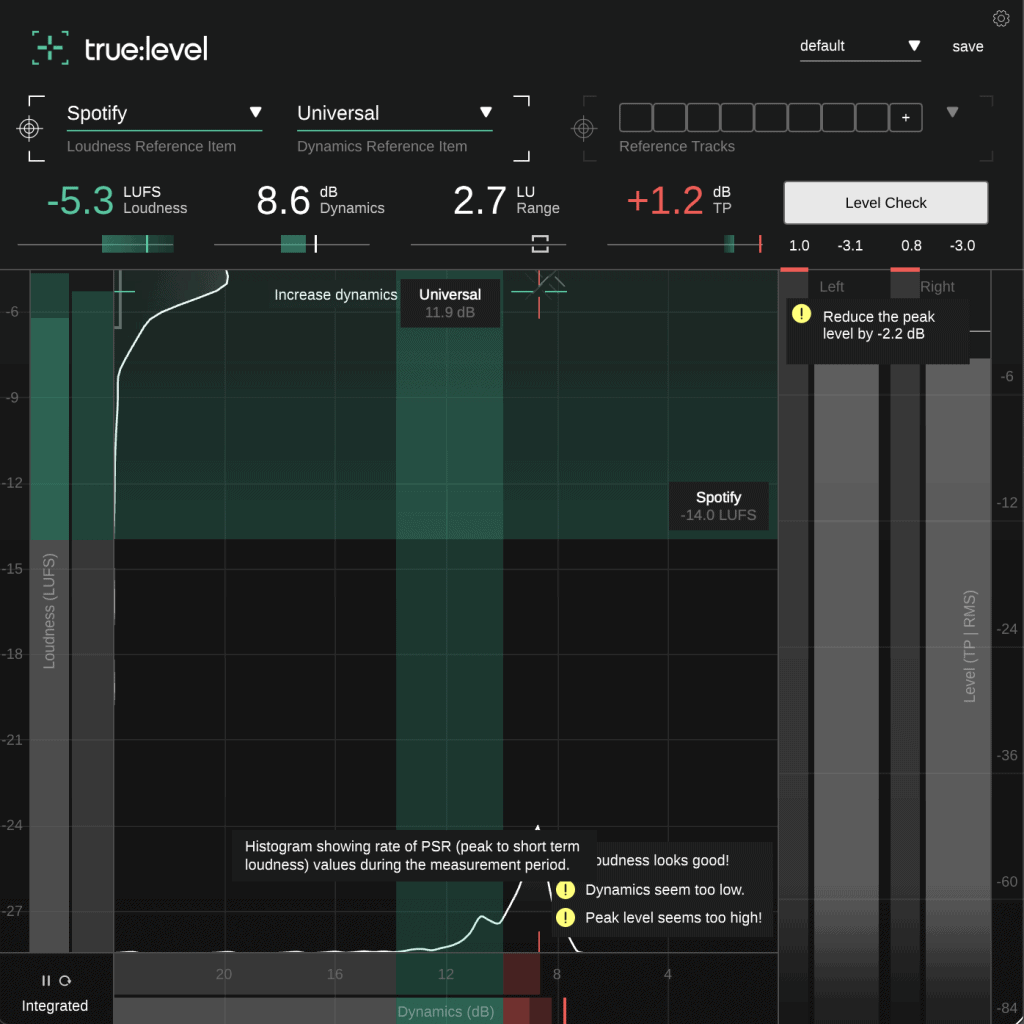
true:level analyzing In for the Kill by La Roux
Last decade, we saw the rise and widespread adoption of music streaming. A huge proportion of people are now subscribed to at least one streaming service, which is undeniably a great value way for the end listener to consume music. The switch to streaming also brought with it another benefit. Much like Apple’s Sound Check functionality, all major streaming services now incorporate a normalized loudness approach to playing their music.
In layman’s terms, tracks that are made loud by reducing dynamics will end up the same level as every other track, and will still have no dynamics. It is for this reason that many cite streaming services as the end of the loudness wars.
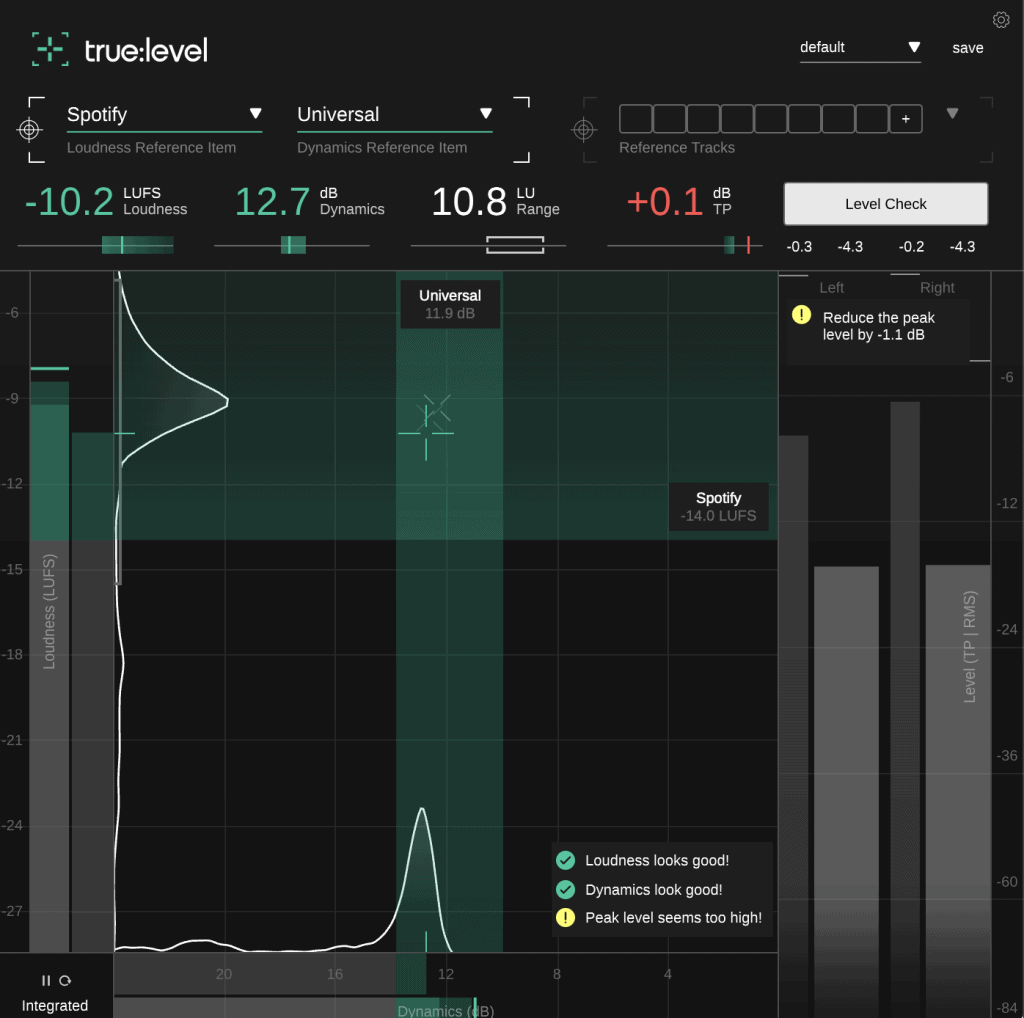
true:level analyzing Top (2012) by Beyonce
Once engineers knew they were up against Spotify and co’s own volume management algorithms, they began to bring levels back down, thus reintroducing dynamics to their mixes. We can see this from Love on Top (2012) by Beyonce and Dead Boys (2018) by Sam Fender, which feature considerably more dynamics than music from the previous decade.
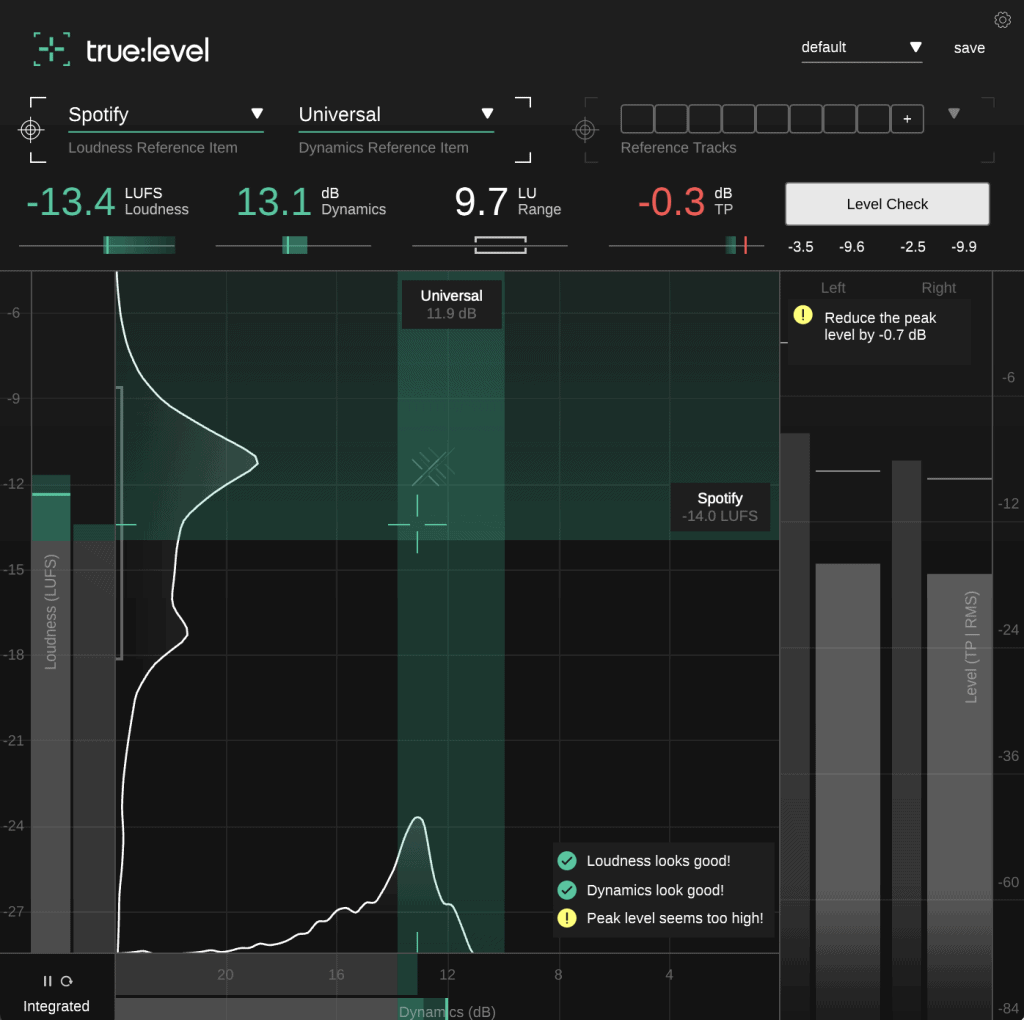
true:level analyzing Dead Boys (2018) by Sam Fender
That brings us up to the present day, where music streaming has become a permanent fixture in modern music consumption. It’s a widely understood scientific fact that louder sounds better, so of course engineers will continue to find ways to achieve as much volume as possible without having it turned down again by the streaming platform. This is made easier by metering plugins, such as true:level, that contain a range of loudness standards for different music platforms.